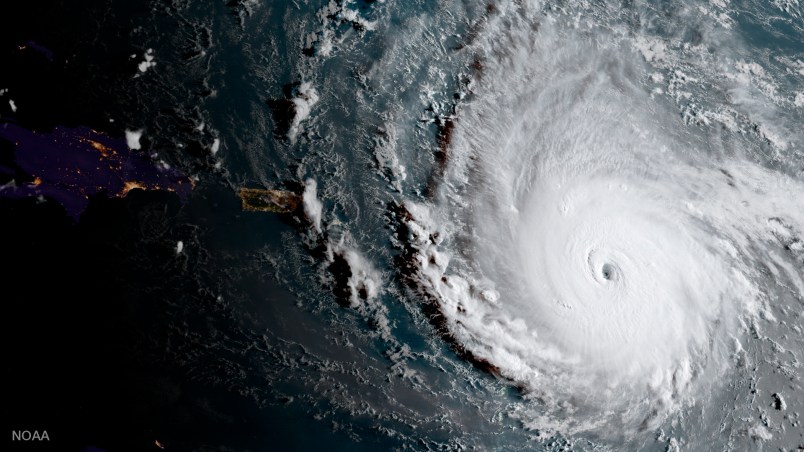SAVANNAH, Ga. (AP) — Georgia’s governor on Thursday ordered the state’s nearly 540,000 coastal residents to evacuate inland ahead of Hurricane Irma as emergency officials warned the storm still had the potential to strike as a major hurricane, something the Georgia coast hasn’t seen in more than a century.
“If there’s a freight train coming at you, then you get off the tracks,” said Jason Buelterman, mayor of Tybee Island, a beach community of more than 3,000 residents east of Savannah.
Gov. Nathan Deal ordered all six of Georgia’s coastal counties to begin to evacuate at 8 a.m. Saturday. That’s when the state Department of Transportation planned to turn all lanes of Interstate 16 into a one-way route sending traffic west from Savannah to Macon about 160 miles (260 kilometers) inland.
It’s the second time in less than a year that coastal Georgia residents have been told to flee a storm. That last time was when Hurricane Matthew brushed the state’s 100-mile (160-kilometer) coastline without coming ashore last October. Three people died in Georgia from that storm, which caused an estimated $500 million in damage.
Traffic was already heavy on Interstate 75 to Atlanta by Thursday afternoon with evacuees pouring out of Florida. Forecasts called for Irma’s center to reach the Georgia-Florida line by Monday morning, though the storm’s exact path and intensity remained uncertain.
In Chatham County, Georgia’s most populous coastal county that includes Savannah, emergency management director Dennis Jones warned Irma could bash the coast with 15 feet (4.5 meters) of storm surge and force floodwaters up the Savannah and Ogechee Rivers, potentially swamping 60 percent of the county.
“What we saw during Matthew could exponentially increase,” Jones told a news conference Thursday.
Jones held out the possibility that Irma could strike Georgia as a Category 3 or greater hurricane. The last storm that powerful to make landfall along the Georgia coast arrived in 1898.
No evacuations had been declared yet in neighboring South Carolina, where Gov. Henry McMaster declared an emergency Wednesday and officials assessed the chances of receiving a major hurricane strike there for the first time in nearly 28 years.
“It is a precaution. This is not an order of evacuation,” McMaster said in Columbia, South Carolina’s capital, adding evacuations could be ordered as early as Friday — if needed. “Assume it’s arriving tomorrow morning and get ready. When that hurricane is coming, when it gets close, it’s too late.”
The last major hurricane to hit South Carolina was Hugo in September 1989. It slammed ashore just north of Charleston with winds of 135 mph (215 kph), causing 13 deaths in the state and $6.5 billion in damage in 1989 dollars.
Also, North Carolina Gov. Roy Cooper on Thursday declared a state of emergency for the entire state. He added that all swift-water rescue teams the state had sent to Texas for Hurricane Harvey were expected back in North Carolina by Wednesday night.
Irma had winds of 170 mph (270 kph) on Thursday as it raked across Caribbean islands on a path toward South Florida. Forecasters said tropical-storm- force winds could reach Georgia over the weekend and possibly South Carolina soon after, though Irma’s exact path remained uncertain still days away.









